UNIT 4 INTRODUCTION TO CLASSROOM MANAGEMENT
Key unit Competence: Use effective strategies for classroom management
Introductory Activity
A teacher plays different roles in the classroom and the teaching and learning process will involve classroom dynamics. During the process, different behaviors are manifested by learners.
What do you think the teacher needs to do in order to be successful during teaching and learning process?
Describe strategies or techniques that the teacher will use in order to be effective in teaching and learning process.
4.1. Key concepts for classroom management
Activity 4.1
Bearing in mind the work and the role of a teacher, brainstorm and define different terminologies related to what the teacher does as a manager of the classroom.
Classroom management
Classroom management is “the actions and strategies teachers use to solve the problem of order in classrooms” (Doyle, 1986, p. 397). Brophy (1986) cited in Sanchez (2011, p. 2) defines classroom management as a teacher’s efforts to establish and maintain the classroom as an effective environment for teaching and learning.
This concept encompasses how teachers deal with issues of supervision, facilitation, and manipulation of the environment and class activities inside another dimension of management: student’s actions (misbehaving), maintenance of discipline and orchestration of the general dynamics of a class. Effective teachers also use rules, procedures, and routines to ensure that students are actively involved in learning (Marzano, Marzano, & Pickering, 2003).
They use management not to control student behaviour, but to influence and direct it in a constructive manner to set the stage for instruction (McLeod, Fisher, & Hoover, 2003).
The following are terminologies related to classroom management:
- Academic learning time: the portion of engaged time where students are learning.
- Allocated time: the amount of time students and teachers spend at school.
- Asynchronous: form of communication that does not involve immediate feedback from each other.
- Authoritarian teacher: a teacher that emphasizes behavioural control.
- Authoritative teacher: a teacher that emphasizes the importance of providing firm direction, which recognizing the unique contributions of each student to the learning process.
- Conflict resolution: is a way for two or more parties to find a peaceful solution to a disagreement among them.
- Congruent communication: a communication pattern in which the person sends the same message on both verbal and nonverbal levels.
- Emphatic listening: where the listener moves beyond sympathy, which strives to console, and tries to connect and genuinely understand the other’s perspective.
- Engaged time/Time on task: that portion of allocated time spent participating in learning activities.
- Functional assessment: comprehensive set of assessment procedures used to determine the function that problematic behaviours serve in the life of the student.
- Interpersonal collaboration: a style of direct interaction between at least two co-equal parties voluntarily engaged in shared decision making as they work toward a common goal.
- Learning center: a specific location within a classroom designed to meet a specific educational objective.
- Non-verbal communication: communications without words that involves tone of voice, eye contact, hand gestures, facial expressions, touching, etc.
- Paralanguage: characteristics of language involving volume, rate, pitch, and pronunciation of spoken words.
- Participation structures: lecturing, question and answer, discussion, group work.
- Peer mediation: technique of using a trained student to act as a facilitator in the conflict of other students.
- Positive behavioural supports: activity or technique designed to help students develop appropriate and adaptive behaviours and to overcome existing behaviour challenges.
- Positive learning environment: environment characterized by a fundamental respect for all persons, explicit standards for appropriate conduct, positive emotional experiences, and a collaborative recognition that everyone contributes to the success of the learning environment.
- Procedures/Routines: guidelines for classroom activities.
- Rules: a set of behavioural standards.
- Self-management: management of or by oneself; the taking of responsibility for one’s own behaviour and well-being.
- Social skills: socially acceptable patterns of behaviours that support positive outcomes and avoid aversive situations.
- Synchronous: form of communication that involves two-way communication in real time.
Application Activity 4.1
Outline terminologies related to classroom management.
4.2. Components of classroom management
Activity 4.2
With the experience you have got from your first time of entering the classroom until now, you have observed the works of the teachers.
Describe the key elements on which classroom management is based.
Classroom management is the use of procedures and teaching techniques that promote a safe and efficient learning environment. For primary school teachers, disciplinary method and behavioural expectations are central to this system.
As students age, the managerial style of instructors may change to assist students in the development of self-guided learning.
Although every teacher will have a unique style of management to meet each class’ needs, the same elements can be found consistently and some of them are described below:
- Classroom design
Although often overlooked, the first element of classroom management is intentional design. Use the positioning of your desks, displays, storage and equipment to create a warm and welcoming room. Make sure you have removed all unnecessary and distracting items from your classroom.
Here are some examples of seating plan that will help the teacher access and control learners’ behaviour easily.

- Rules
Develop rules that foster respect, caring and community in your classroom. Make your expectations for behaviour clear at the beginning of the year by reviewing these rules with students. Continue to reinforce your rules throughout the course, and post them in a visible location.
- Discipline
Classroom rules must have concrete consequences. Students will test the limitations of each teacher from the very first day of school. Be firm, fair and consistent. Begin by warning a student and having them confirm their knowledge of the classroomrules. Follow-up continued disruption by issuing demerits, detention, or other official
reprimands. Never hit, harass, embarrass or yell at students-this is counterproductive and unprofessional.
- Scheduling
Keep your class in order by staying on time and on task. Do class work during class time, leaving plenty of room for in-class assignments. Cramming work and instruction too close to other activities can lead to disruptive behaviour and poor comprehension. There should be space before and after every room change, lunch, and recess for students to settle down. Having a regular daily schedule helps you and your learners prepare for upcoming tasks. Be firm but fair with due dates. Always leave room for extenuating circumstances. Never leave room for procrastination.
- Organization
Stay organized inside and out. Keep your student files, assignments, lessonplans and administrative paperwork in order.
It sets a good example for your students and keeps you from wasting instructional time looking for materials.
Share this system with your students. Post the classroom calendar, homework schedule and assignments on the board. Allow students to see how you take notes. It helps them distinguish irrelevant information from essential details.
Encourage self-directed learning by providing students with their own agenda (notebook). You may require students to have their notebooks checked at home or during class.
- Teaching and learning methods and techniques
Use active methods and techniques and vary them to meet students ‘needs.
Learn a lot about each of your student. What are their learning styles? How do they learn best?
Do they work well in groups? These observations are crucial when fitting your teaching style to your students’ needs.
- Communication
Communication is the most important aspect of classroom management. It is essential to have clear and consistent lines of communication with your administration, colleagues, students and parents. Without it you will lose the respect of peers, the attention of students, and the cooperation of parents. Be responsive to the concerns of others. Be flexible and willing to accommodate reasonable requests.
Application Activity 4.2
Describe the components of classroom management for effective teaching and learning process.
4.3. Strategies for classroom management
Activity 4.3
In the previous lessons you have learned about the meaning of classroom management and its components. Explain what and how a teacher can do in order to manage effectively his/ her classroom.
4.3.1. Classroom management strategies and techniques
Marcus Guido (2018) proposed 20 classroom management strategies and techniques. As a teacher, you are advised to use the ones that best appeal to your situation and teaching style. Universal classroom management strategies include:
• Model ideal behavior
Make a habit of demonstrating behavior you want to see, as many studies showthat modeling effectively teaches students how to act in different situations.
A straightforward way to model certain behaviors is holding a mock conversation with an admin, other teacher or student helper in front of the class. Talking about a test or other relatable topic, be sure to:
- Use polite language
- Maintain eye contact
- Let one another speak uninterrupted
- Raise concerns about one another’s statements in a respectful manner
- After, start a class discussion to list and expand upon the ideal behaviors you exemplified
• Let students help establish guidelines
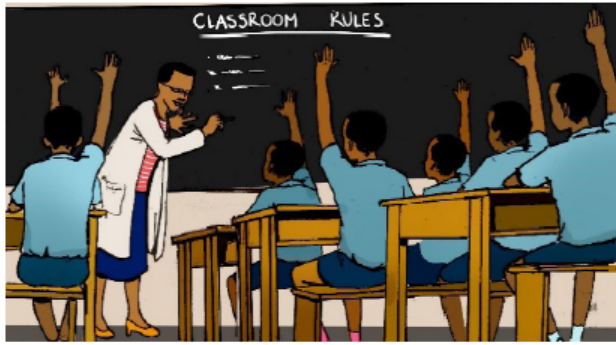
Encourage all students to help you build classroom rules instead of dictating them what they are not allowed to do: near the start of the year or semester, start a discussion by asking students to define acceptable and unacceptable behaviors during lessons? The teacher may be shocked at the strictness of some proposed rules.
Avail rules
Avail printed copies of list of classroom rules that the class discussion generated.
This an evidence that that you respect their ideas which motivate students to adhere to them.
- Avoid punishing the class
Address isolated behavior issues instead of punishing an entire class, as the latter can hurt your relationships with students who are on-task and thereby jeopardize other classroom management efforts. Instead…., call out specific students in a friendly manner. For example:
- “Do you have a question?”, instead of “Stop talking and disrupting other students”.
- “Do you need help focusing?”, instead of “Pay attention and stop fooling around while I’m talking”.
This basic approach will allow you to keep a friendly disposition, while immediately acknowledging poor behavior.
- Encourage initiative
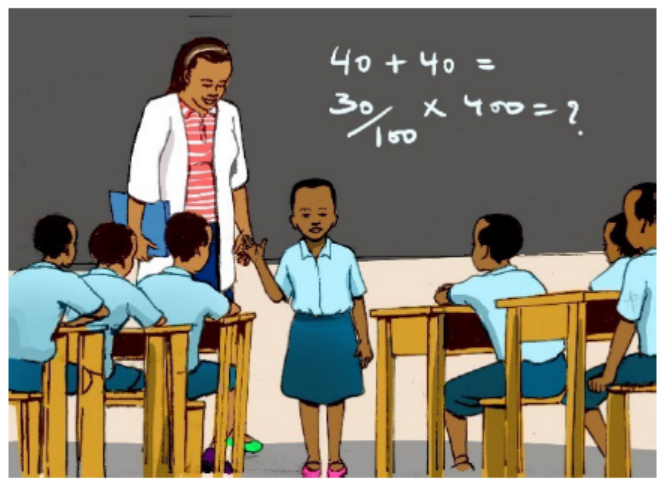
Promote growth mindset, and inject variety into your lessons, by allowing students to work ahead and deliver short presentations to share take-away points.
Almost inevitably, you’ll have some eager learners in your classroom. You can simply ask them if they would like to get ahead from time-to-time. For example, if you are reading a specific chapter in a textbook, propose that they read the following one too. When they deliver their subsequent presentations to preview the next chapter on your behalf, you may find that other students want a bit more work as well.
- Offer praise
Praise students for jobs well done, as doing so improves academic and behavioral performance, according to a recent research review and study (Some examples of these researches are needed here).
When it is sincere and references specific examples of effort or accomplishment, praise can:
- Inspire the class
- Improve a student’s self-esteem
- Reinforce rules and values you want to see
Perhaps more importantly, it encourages students to repeat positive behavior.
Let’s say a student exemplifies advanced problem-solving skills when tackling a math word problem.
- Use non-verbal communication
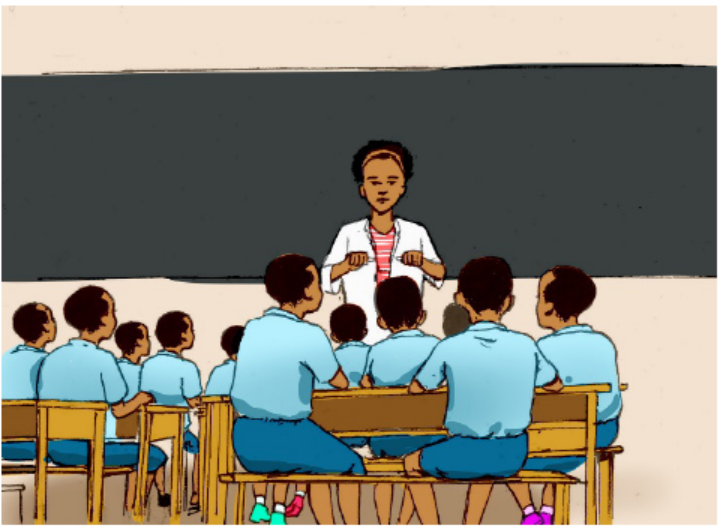
Complement words with actions and visual aids to improve content delivery, helping students focus and process lessons.
Many differentiated instruction strategies and techniques are rooted in these communication methods. For example, running learning stations- divided sections of your classroom through which students rotate - allows you to deliver a range of non-spoken content types. These include videos, infographics and physical objects such as counting coins.
- Give tangible rewards

Reward specific students at the end of each lesson, in front of the class, as another motivational and behavior-reinforcement technique.
- Make positive letters and phone calls
Keep students happy in and out of class by pleasantly surprising their parents, making positive phone calls and sending complimentary letters home. When the occasion arises, from academic effort or behavioral progress, letting parents know that their child has a trickle-down effect. They’ll generally congratulate their learners; their learners will likely come to class eager to earn more positive feedback. This can also entice parents to grow more invested in a child’s learning, opening the door to at-home lessons. Such lessons are a mainstay element of culturally-responsive teaching.
- Build excitement for content
Start lessons by previewing particularly- exciting parts, hooking student interest from the get-go.
As the bell rings and students settle, go through an agenda of the day’s highlights. The goal of this classroom management technique is to immediately interest students in your agenda and thereby dissuade misbehavior.
- Offer different types of free study time
Provide a range of activities during free study time to support students who struggle to process content in silence, individually. You can divide your class into teams to carry out different activities. By running these sorts of activities, free study time will begin to benefit diverse learners. This should contribute to overall classroom engagement.
- Write group contracts
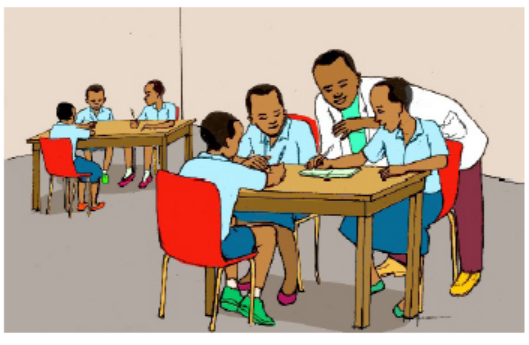
Group contracts should be based on expectations that students have for each
other, and you have for them. You can gather the class’s thoughts by holding
a discussion about what the ideal group member does, and how he or she
acts. Once you’ve written the contract, encourage students to come up with
consequences for violating expectations.
By having them sign a fresh version of the contract before each group task and project,
you’re empowering them to hold each other accountable.
• Assign open-ended projects
Encourage students to tackle open-ended projects — projects that don’t
demand a specific product — to allow them to demonstrate knowledge in
ways that inherently suit them.
This starts by giving the class a list of broad project ideas, asking each student to choose one.
Be sure to provide a rubric for each project that clearly defines expectations. By both enticing and challenging students, you should notice that they’ll:
- Work and learn at their own paces
- Engage actively with appropriate content
- Demonstrate knowledge as effectively as possible
With these benefits, students may actually look forward to taking on new projects.
4.3.2. Classroom management strategies for individual students
- Use educational technology that adjusts to each student
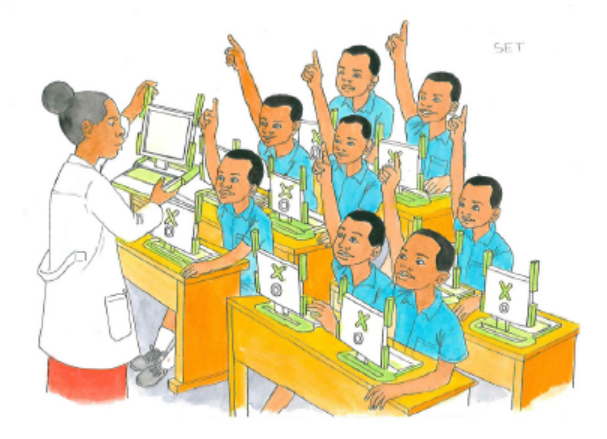
Give students who struggle to process your content opportunities to try educational technology that adapts to their needs. It also offers feedback to help them solve specific mistakes, as they answer questions that use words, charts, pictures and numbers.
- Interview students

Interview students who are not academically engaged or displaying prosocial behavior to learn how to better manage them.
Set time to be aside with each student and ask those students about:
- What helps them focus?
- Who they work well with?
- Their favorite types of lessons.
- Their preferences in-class activities
- Which kinds of exercises help them remember key lesson points
Note their answers to come up with activities and approaches that engage them, thereby limiting classroom disruptions.
- Address bad behavior quickly

- Avoid hesitation when you must address bad behavior, especially when a student breaks a documented rule. Acting sooner than later will help ensure that negative feelings — whether between students or you and a student — won’t fester. Failure to act can result in more poor behavior, leading to needlessly difficult conversations.
- Keep in mind that it is valuable to talk to the student in private. Emerging research shows that punishing students in front of peers has “limited value.”
- Consider peer teaching

Use peer teaching as a classroom management strategy to allow the top performers to engage and educate disruptive and struggling students. Peer teaching activities, such as pairing students together can be especially beneficial for students who suffer from low confidence and poor interpersonal skills.
If these strategies work especially well for individual students, you should see similar success by using them as class-wide student management techniques.
Application Activity 4.3
Describe different techniques of classroom management
4.4. Importance of classroom management
Activity 4.4
With the knowledge you have about classroom management and other information such as: When teaching, the teacher needs to achieve his or her learning objectives. Learners in the same process also need to benefit from the same activities. There will be different movements, behaviors which may be good or bad; within a lesson - period, the teacher and learners will also use different teaching and learning resources. In consideration of all the above elements, justify the reasons why a teacher needs to have classroom management skills.
Effective classroom management paves the way for the teacher to engage the students in learning.
The following highlight the importance of classroom management:
- Effective teaching
Classroom management strategies help to create an organized classroom environment that is conducive to learning. Learners know the expectations in different types of learning situations. For example, learners would know that when working in small groups, they talk in quiet voices and take turns talking. They might each have a specific job within the group.
- Efficient use of time
Taking time before school starts to create routines and procedures saves you time in the long run. When the children know what to do, it becomes a natural part of the routine. After a few weeks, you don’t need to tell them what to do.
The students know they get their planners out, write in homework assignments and gather all of their materials at the end of the day, for example.
- Consistency
A teacher with strong classroom management skills creates consistency for his students. The learners know what to expect every day when it comes to the routine activities. Your students may fare better when you’re gone if you have set expectations for everyday tasks. They know how the classroom runs so they are able to help the substitute run the classroom. For example, if the learners know they’re supposed to enter the room and start working on a math problem on the board, a substitute doesn’t have to spend his time corralling the learners or trying to keep them occupied while everyone arrives.
- Fewer behavioral problems
The main goal of classroom management is to reduce misbehavior in the classroom. Effective classroom management gives the students little time to misbehave. Because the expectations are clearly explained, the students know what they need to do. Transitions in particular sessions are easier to control when a teacher has strong classroom management skills. The expectations for behaviors that are part of a classroom management plan give students boundaries, as well as consequences.
- To optimize student learning and achievement
Effective classroom management is a crucial component of ensuring that all students achieve in your classroom where children feel safe and appropriately challenged.
- • To maintain a positive classroom atmosphere
This is done when there are well established rules, procedures and standards, and well implemented classroom routines. There is also a sense of respect and community among students and teachers.
- To manage classroom resources effectively
School management will instill in learners the ability of having all resources well-arranged and managed.
Application Activity 4.4
With clear examples, discuss the significance of classroom management for effective teaching and learning process.
End of unit Assessment
To this end you have knowledge about classroom management. As a future teacher, think of any behavioral problem that can arise in the classroom. Suggest and explain strategies you can apply to prevent and or handle it.
